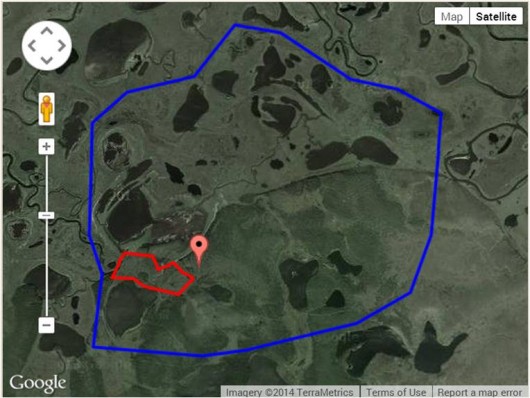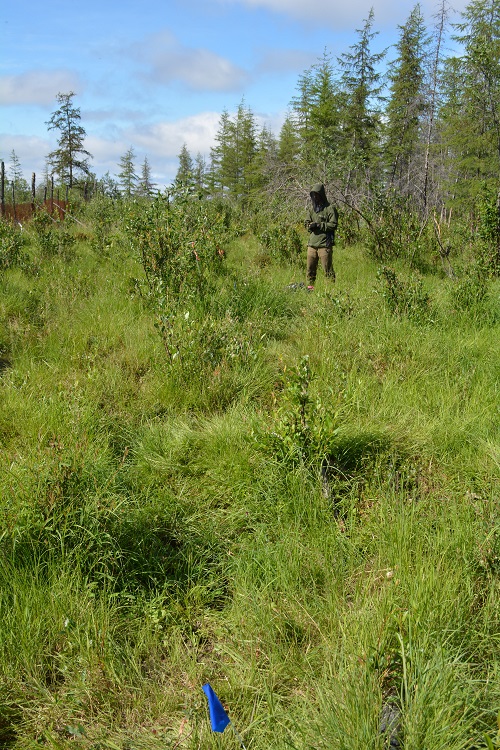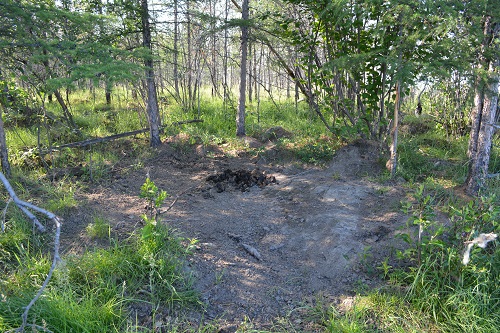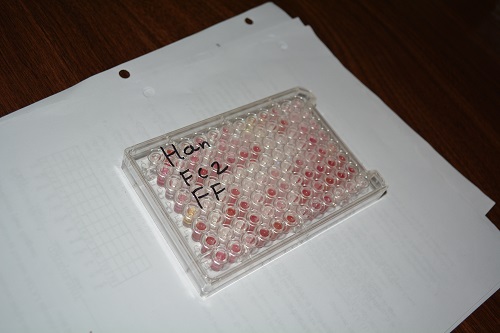“Restoration of the Mammoth Steppe Ecosystem” is something of a tagline for the Pleistocene Park experiment. It’s called the Mammoth steppe because some think that the gigantic herbivores of the Pleistocene were responsible for maintaining the system, with mammoths as a keystone species because of their ability to knock over trees and consume incredible amounts of vegetation. Now, the Zimovs don’t have a mammoth (yet) but there are a lot of different factors coming together to shape the park. Let’s explore them, keeping in mind that our overall goal is to understand the conversion of a forest to a steppe’s impact on climate change in terms of carbon uptake or loss.
Carbon is just about everywhere in the park. It’s in the trees, shrubs, and grasses as cellulose and lignin. It’s in the soil in a whole slew of forms. In the water it might be particulate or dissolved, it could be anything from carbon dioxide to tough aromatic rings. It’s in the animals- keratin in the hooves, a vast diversity of proteins in the muscles and at smaller levels enzymes in cells- the carbon is also stored in long chains, making fats and lipids so the animals can survive the harsh Siberian winter. And it’s in the air. Mostly as carbon dioxide, but also as methane, carbon is in the atmosphere.

Where do you see carbon storage?
Carbon is versatile, this is why it’s so important in biogeochemistry. It’s also why organic chemistry is both beautiful and (for me) a huge headache. Carbon will sneak from the biosphere to the atmosphere then the hydrosphere and back again before you can say “flux.” So how can we quantify the carbon in any given area to say what differences there are between the steppe and the forest in carbon storage?

A typical scene from a steppe site.
First, we choose sites to represent our different ecosystems. Three is typically the minimum for replication in science. Three steppe, and three forest. Ok. Then we have to get a rough idea of the carbon in our given area. How many trees are there per square meter? How big are these trees? Are they alive or dead? We do a similar process for shrubs, like willow, birch, and alder. What’s covering the ground? How much does that moss weigh? Let’s take a few samples, dry them, and extrapolate.
What we’ve mentioned so far refers to the above-ground carbon pool. But what about all of that subsurface carbon? We have to check that as well. We take samples of the dark, newly decomposing, organic layer and measure how deep it runs. Below the organic we pull out the mineral soils, and measure how deep the ground has thawed. Furthermore, we leave probes that will measure the temperature of the soil once an hour for up to three years.
This seems pretty normal so far, but keep in mind; this is Pleistocene Park. We’ve literally been interrupted by a herd of horses while taking thaw depth measurements. That’s the whole point. We want to understand what is causing whatever differences we might measure between the steppe and forest; particularly in relation to thaw depth and soil carbon and nutrient contents. Is the soil being preserved? Where and why?
Even though mammoths are absent from the park, we still have a plethora of arctic megafauna influencing our sites. The animals leave signs of their presence in the form of hair, trails, browsed shrubs, and especially dung. We count the dung from musk ox and bison as casually as we measure a larch’s diameter. This dung is a sign of the animal’s presence, but it’s also a nutrient packed fertilizer, plopped onto the ground, ready to stimulate some ecological changes.

Bison are fond of rolling around in dusty soil. Look at that disturbance.
No doubt, the animals’ eating, trampling, and…. fertilizing… are factors with the potential to influence the ecosystems, but we can’t get too hung up on the biggest, easiest thing to see. Maybe we’ll find that the animals are changing the systems’ carbon storage properties one way or another, but soil carbon does not magically metabolize on its own.
The soil is teeming with invertebrates and microinvertebrates. A grub happened to crawl out of one of my organic soil samples, and I’ve caught springtails, collembola, and soil mites in my improvised traps. These mini-beasts eat decaying plant material, fungi, and each other- a vicious world we can barely see. We want to know if there are differences in these communities between the steppe and forest, just seeing more in one soil could suggest a higher rate of nutrient cycling. Soil animals are important.
But compared to these next players, even my collembola (smaller than a mosquito’s head) seems giant. Bacteria are everywhere, including in the soil. Different bacteria have the ability to digest those different forms of carbon we talked about at different rates. Conveniently, we actually have a way to measure this. I can take a sample of soil from my plots, mix it in water, seriously dilute it, then feed it onto a plate full of pits with various carbon compounds in them. If these compounds are digested, they release a purple dye, increasing the opacity of that well, which specialized instrument can read and quantify. These plates can be used to identify an isolated type of bacteria, or assess the metabolic diversity of a bacterial community. Similar plates exist for fungi, and I’m using both.

Note the range from very light to very dark on the wells.
Examining the microinvertebrate, bacterial, and fungal communities in the soil shines a light on the small things that run the world. But there’s one other major factor I need to consider when examining the park:
The people and their machines.
Animals like to roam, especially arctic animals. I spent a summer among the Beverly Caribou herd as it migrated across Canada, and I can tell you caribou may not be the fastest, but their herds do not stop. If you watch timelapses of migration you can see the animals at the front go to sleep, then begin moving again once they’re in the back of the herd. Horses and Bison also have strong migration instincts, so a fence was important to achieve the high density of animals needed for the study. Erecting this fence required clearing a number of trees while driving the equipment through. Does this simulate a mammoth’s clearing of trees? Maybe. Is it exactly the same? Probably not. Bulldozers and (I’m told) an old tank have also been used to prepare for the reintroductions, and neither of those eat leaves, nor do they defecate. Not exactly a large, furry, elephant.
The point being, this is a great experiment. It’s planning is elegant and its inception was ahead of its time, but we still need to recognize it is not a natural system. The animals aren’t migrating, disturbances were made by machines instead of megagrazers, predators aren’t in the system to encourage movement and cull the prey, and the populations are still unnaturally low for these herd animals. Pleistocene park is not a time machine- it’s an experiment.
By looking at all levels of the park, from mammoths to microbes, while factoring in the machines, I can’t wait to see what I’ll learn. Hopefully, my studies can contribute to those done by the Zimovs, and others, in understanding what this experiment means for the ecosystems involved, the climate, and our ancient history.
One more field day, a little more lab work, then the analysis.
About which, I’m sure you’ll hear plenty.




Comment(1)-
Ovie says
July 23, 2014 at 10:42 pmAre they planning to introduce new animals to the park